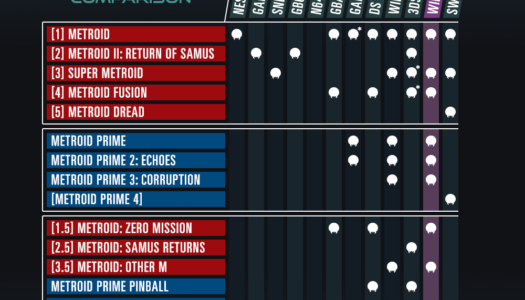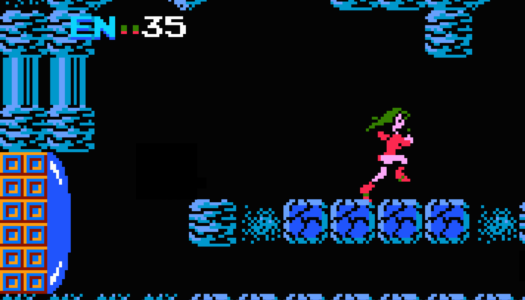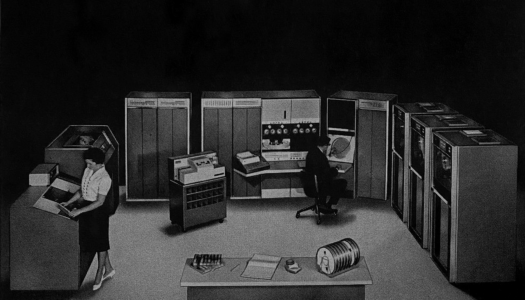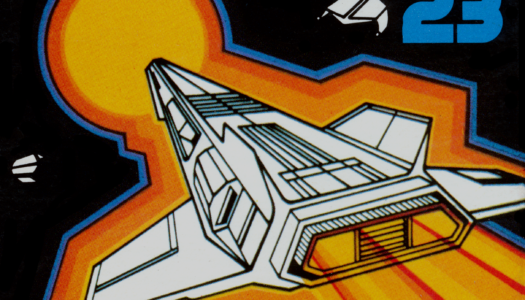Rock Of Ages

Publisher: Atlus / Developer: ACE Team / Platform: PSN, XBLA
Sisphyus has had enough. The mythological character famously destined to roll a boulder uphill for eternity has finally gotten fed up, and has decided to aim his boulder right down the hill at his captor. Now free from his plight, he begins a journey in which he comes across various historical figures, all of whom wish to challenge him to a duel. A duel, in this case, being a race of boulders.
Rock Of Ages involves you and the other historical figure (who, for whatever reason, has a boulder of their own) simultaneously racing your boulders downhill on adjacent but identical tracks. Your goal is to steer your boulder down a winding path, dodging obstacles set up by your opponent, to try and be the first to get to the bottom and knock down the gate to the enemy’s tower. Because this is also a tower defense game. A tower defense downhill racing game. And did I mention this all takes place in a world that stylistically emulates the quirky Monty Python animations of Terry Gilliam?
Yet how is it that a game so wonderfully mad can somehow manage to have a story mode that ends up being the one thing that an actual Terry Gilliam game would likely never be: dull?
Before continuing any further, I should clarify that I’m not saying the gameplay in general isn’t fun. When facing off against a human opponent (in split-screen or online multiplayer), and once you are both familiar with all the tracks (and available shortcuts), the game is a fantastic combination of Super Monkey Ball-esque racing and frantic tower defense strategy. However, the story mode has some issues.
The main issue is that the AI enemies just aren’t very fun to play against. Knocking down the gate of the enemy tower requires at least three rounds, and two human players will adjust their strategy (both offense and defense) based on what they saw the other player doing the previous round. That dynamic is lost when playing against the AI, who doesn’t adjust that much to what you’re doing.
It’s especially tiresome if you’ve made the mistake of playing the story mode before anything else and thus are completely unfamiliar with tracks. Not only is it abundantly clear by how the AI positions their defenses that they know the track better than you, but it then becomes just as obvious that they’re going easy on you when they pass right by a shortcut that they’ve set up defenses against on your side of the track. As a result, beating the AI never feels entirely satisfying.
Adding to that lack of satisfaction is the repetitive nature of the story mode. Every level begins with an amusing Terry Gilliam-style sequence, but every level ends the exact same way: with a dramatic pause after the enemy gate has been broken down, followed by the character within screaming like a girl. After which you are once again given control of the boulder, so that you can run over the enemy within the tower, who will patiently stand there until you flatten them, which results in a predictable farting noise.
The first time, the scream and fart were decently amusing, being that they were unexpected. But unexpectedness is a big part of what makes the style of humor in Terry Gilliam’s animations funny, and doing the same bit every time quickly goes from amusing, to predictable, to tiresome. I found myself hoping that the next level would throw in some other random sound—any sound—just to surprise me.
It’s not as bad in multiplayer matches, where battling the other player is actually enjoyable, but the dramatic pause does give online opponents a perfect opportunity to rage quit.
Adding to the story mode tedium, any time you fail a level and retry, you will encounter around ten seconds of loading time, during which you are forced to re-watch the beginning of that level’s intro scene. Even if you pause the game and choose “Restart Level,” you’ll still be stuck watching those same ten seconds of the intro.

The sometimes touchy controls don’t help matters. I have no complaints as far as controlling the boulder itself, other than that the jump button will occasionally randomly decide not to respond. Steering the boulder is a bit sluggish, but it does a good job of emulating trying to redirect a boulder once its gained momentum going in another direction. My problem is with the defense-laying controls, which are so sensitive that the cursor will regularly skip squares when trying to place obstacles in a precise manner.
Zooming in helps you place things more precisely, but constantly having to zoom in and then back out again (in order to move to the next section of track faster) burns up valuable seconds when you only have about thirty seconds to place your defenses. This isn’t so bad when playing against a human, who is dealing with the same problems, but it seems a little unfair when AI opponents are seemingly able to merely think their defenses into existence.
All of this adds up to an experience that left me wondering why I was even continuing through story mode. Collectable keys hidden throughout the levels in a manner that reminded me of San Francisco Rush were an enjoyable diversion until I encountered a few wings-required ones that essentially required restarting the level if I failed the attempt (resulting in having to watch the same ten seconds of the intro over and over). Scattered boss battles thrown in for a change of pace ended up being the least inspired part of the game. And selectable characters (and boulders) for you to choose from in multiplayer are actually all unlocked from the start, rather than requiring you to beat that character in story mode first.
With the complete lack of incentive to finish story mode (other than just to say I had, and/or earn an achievement), I found myself dreading every time the overhead map revealed a group of additional levels ahead of me. “How many more of these damn things are there?” is not a question you want a player to be asking herself.
For this reason, I recommend doing the Time Trial first. Story mode goes a lot smoother when you’re already know the tracks pretty well, and Time Trial allows you to familiarize yourself with the track, seeking out he best route without having to deal with enemy defenses. The best part? If you restart within Time Trial, there’s no loading time (and no intro scene repetition)! Doing these first will make the rest of your experience with the game much more enjoyable. (And just try and beat my #1 time on Witches’ Sabbath!)
Beyond multiplayer battles and Time Trial, the only other game mode I’ve yet to mention is a fun event called SkeeBoulder. This uses the same tracks as the other modes, but with a twist: both players’ boulders exist on the same track, competing for the same targets (which you run into in order to gain points), and racing towards the same skee ball ramp at the bottom. Whoever makes it into a hole first gets the multiplier for that round, with the winner determined by the final score after three rounds. Where the regular battle mode doesn’t require much communication (you don’t want to tell the other person what obstacles you’re surprising them with, after all), this is a competitive mode that’s likely much more fun when you can shout at each other.
The one area that I think is wasted in the game is the potential for more destructive fun or more strategic tower defense arrangements. You can certainly attempt either during a regular battle, but your chances of winning are generally much greater if you get your boulder rolling as soon as possible and try to dodge all the obstacles. I would’ve liked to have seen an additional mode that involved setting up a strong defense to keep a boulder from even reaching your tower, and/or a sandbox mode where the goal is to just destroy things as gloriously as possible.
Despite a story mode that can be a drag, Rock Of Ages is a fun little group of competitive mini-games that can be a ton of fun when taken in short bursts. Even if it doesn’t fully live up to the concept’s potential, I’d love if all developers in the future tried to be least this creative.

















